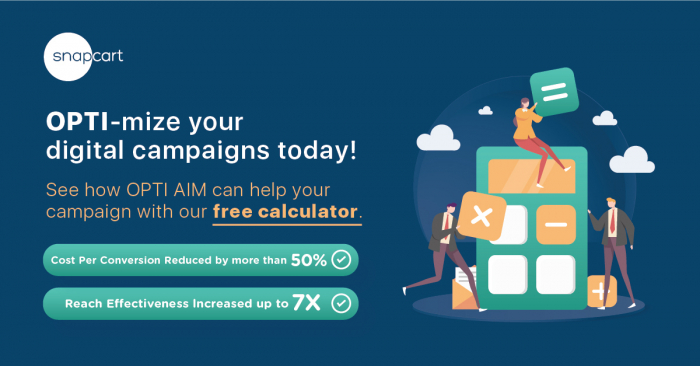With the rise of digital marketing, data is put into the spotlight. The success of modern marketing relies on having and utilizing the right data at the right time and place. It is especially evident in digital marketing where data is the pillar for success. But really, how does data actually play a part in our marketing efforts? To make sure our digital campaigns are running as efficiently as possible, here are some of the ways of data defines our campaigns:
1. Attribution

One of the challenges of offline marketing is attribution, where it is primarily claim-based and hence prone to inaccuracies. Without a proper attribution, how can we determine cost-effectiveness of our marketing campaigns? Data science in digital marketing solves that problem, as it can track the end-to-end process of a customer: from being exposed to advertising to the point where the customer buys the product. This helps immensely in optimizing marketing spend as marketers can maximize their return-on-investment in each channel, owing to the attribution data they were able to collect. Hence, marketers can make better, more educated decisions regarding the campaigns they run and the decisions they make. A very good example for this can be seen in how analytics platforms such as Google Analytics label the sources of metrics it receives, even by default: organic, paid, referral, and the likes. This helps measure the effectiveness of each channel due to the results attributed to them, and helps make decisions on whether or not a channel is performing well or not. Having said that, end to end attribution up to purchase only works with online purchases at the moment due to limited offline transactions data. Attempts have been made to fill in this gap – ibotta in the US was able to digitize coupons and redeem offline – creating a complete exposure to purchase loop for brands to optimize their spends (similar to Snapcart’s PASS).
2. Marketing Algorithm

One of the innovations that comes with data utilization are self learning systems, and marketing systems are no exception to that. What started as something as simple as text search, marketing systems now have automated optimizations, segmentations, and spend allocations–feeding on the data it acquired as it runs campaigns, thereby effectively making the process simpler and simpler for marketers to execute their marketing campaigns. In the long run, the algorithm will significantly lower marketing cost, save time, and deliver great results due to the learning it has accumulated. However, for this we also need to make sure that the data being fed is proper and relevant. There are many ways we can ensure this, such as through proper targeting and attribution setups, quality audience seeds,and having a robust volume of data coming in for the algorithm to study and process. The easiest example we can see this is through our Google search results that, as time goes and it learns our search histories, can suggest search terms that are likely to be relevant to what we want to look for.
3. Audience Segmentation & Creation

Imagine having to request every single detail from all of your customers and having to label them accordingly. As your audience grows, doing this manually becomes unscalable. Innovation does not stop at the utilization of data, it is also ongoing in its acquisition. AI and machine learning helps marketers segment and profile their customers not only from the data the marketers already know, but also from the ones they have yet to know! Well-known methods include behavior analysis, location tracking, and even offline-to-online audience creation (like our OPTI AIM), which helps marketers enrich and even expand their audience data for their campaigns. Our studies show that utilizing audience expansion with quality seed audience helps increase reach effectiveness by up to 7x, reduces cost-per-conversion by up to 50%, and can increase ROI by up to 3x!
Looking at the latest innovations in digital marketing, we’d almost think that digital is definitely the tomorrow, but even so offline is still the main choice for a lot of companies, and especially so for FMCG companies. Though data that we get through digital is accurate, fast, and real-time, there are still some limitations. Attribution of offline activity for example, cannot be recorded easily. With that in mind, make sure that your marketing campaigns are utilizing data as effectively as possible to make sure you get the best results for your spend.






